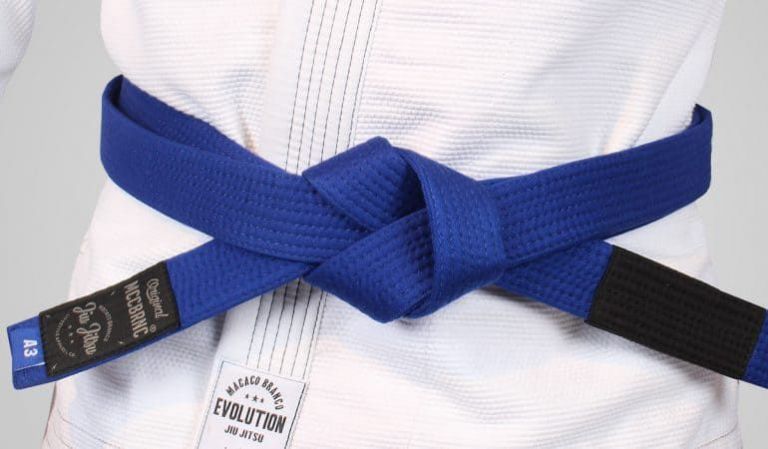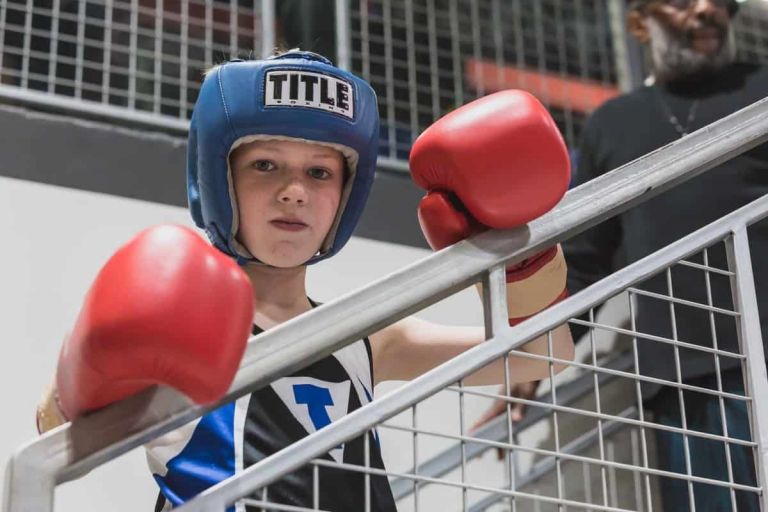Brazilian Jiu Jitsu: Is It Dangerous? The Truth About Common Jiu Jitsu Injuries
There’s a lot of discussion online and in the BJJ community about the safety of Brazilian Jiu Jitsu. Some people say it’s a dangerous sport, while others maintain that it is one of the safest martial arts. So, what’s the truth? In this blog post, we’ll take a look at some of the most common injuries associated with BJJ and see how risky this sport is.
Is Brazilian Jiu Jitsu Dangerous?
In Hawaii, researchers from the University of Hawaii studied statewide Brazilian Jiu-Jitsu competitions between 2005 and 2011. In less than 1% of BJJ bouts, they discovered that injuries occurred, making it considerably safer than Judo, Taekwondo, Wrestling, and MMA. BJJ is one of the least dangerous combat sports to participate in. According to the same research, the most frequent injuries were elbow sprains and knee sprains (arm bars being responsible for the most damage to fighters). Elbow strains were by far the most prevalent ailment in the study.
There were three studies that I looked into about injuries in BJJ during training. They all found different information about the most common types of injuries.
- A 2019 study found the top three injury areas were the knees, shoulders, and ribcage.
- A 2018 study found that shoulder and knee injuries were the most common in 180 novice and advanced BJJ athletes.
- A 2017 study found that the three most common injury locations were hands and fingers, feet and toes, and arm and elbow. The study found the most common medically diagnosed injuries were skin infections, injuries to the knee, and foot and toe injuries.
Is BJJ a Safe Sport?
Nobody is attempting to repeatedly punch you in the face in BJJ, which helps to avoid injuries. With 236 injuries per 1,000 competitions observed over 6 years, MMA had by far the highest rate of injury in competitions (236 injuries per 1,000 matches). MMA is a sport that includes both striking and grappling. This increases the risk of injury, as most injuries in grappling happen when someone is taken down.
In the previously mentioned research, only 46 out of 5022 BJJ practitioners got hurt in competition, which is just 0.83 percent! Remember that injuries are more probable in competition since individuals train harder and do not tap (give up) as frequently in the gym.
In fact, Judo, Jiu-Jitsu’s sister martial art, had more injury rates than BJJ did in competition. This was measured by looking at how many injuries happened per 1000 athletes.
So, what does this all mean? As a new Jiu-Jitsu fighter, are you likely to get injured or break any bones? Well, it depends. Remember all these studies took place in a competition where people are trying their best to win and have a lot of adrenaline. You are much more likely to get injured in competition than in your gym. Your opponent is also less likely to tap in competition than at your local gym.
As a novice, you’ll concentrate on good technique and fitness improvement. You only spar when you’re ready, and you’ll almost certainly be paired with an experienced opponent, resulting in a very low injury rate.
Common Jiu Jitsu Injuries
According to this research, the typical BJJ practitioner will train four times per week and only compete in two events each year. The study sent a questionnaire to 166 BJJ schools across the United States to investigate prevalent joint problems in BJJ.
| Type Of Injury & Percentage Of Total Injuries Number | Total Injuries Number Of Injuries |
| Head & Face (6.6%) Concussion (3) Eye Injury(1) Black Eye(13) Cauliflower Ear(11) Borken Tooth(1) Othe (1) Other (1) | 32 |
| Neck (4.3%) Muscle Injury (5) Disc Injury (4) Ligament/tendon strain (2) Vertebral fracture (1) Trachea injury (0 Cervical Pain (9) | 21 |
| Back (8.8 %) Disc Injury(5) Muscle spasms(3) Other (3) Muscle injury (2) Vertebral fracture (1) Spondylolysis (1) Lower Back Pain (13) Muscle spasms (9) Upper Back Pain (6) | 43 |
| Torso (5.5%) Fractured Ribs (6) Other (4) Chest Pain (13) Abdominal Pain (3 | 26 |
| Shoulder (8.4%) Rotator cuff injury (7) AC joint separation (3) Dislocation (3) Other (2) Labrum tear (1) Shoulder Pain (25) | 41 |
| Elbow (10.5%) Elbow hyperextension (4) Arm/forearm muscle (2) Strain/sprain (2) Elbow fracture (1) Bone fracture (1) Ligament/tendon tear (1) dislocation (0) Hyperextension (26) Elbow pain (12) Arm/forearm pain (2) | 41 |
| Wrist (1.8%) Bone fracture (1) Sprain/strain (1) Wrist pain (7) | 9 |
| Hand & Finger (14.4%) Jammed finger (1) Other (4) Bone fracture (3) Finger hyperextension (2) Dislocated finger (1) Jammed finger (28) Finger hyperextension (22) Finger pain (6) | 67 |
| Hip and Groin (3.1%) Other (1) Hip Pain(8) Groin Pain (6) | 15 |
| Leg & Gluteal (2.3%) Quad/hamstring injury (2) Bone fracture (1) Calf injury (1) Glute injury (1) Leg pain (5) glute pain (1) | 11 |
| Knee (9.2%) Meniscus tear (12) Ligament/tendon tear (7) Knee sprain/sprain (5) Patella dislocation (1) Other (1) Knee Pain(19) | 44 |
| Ankle (6.2%) Sprain (4) Bone fracture (2) Ligament/tendon tear(1) Sprain (22) Ankle pain (1) | 30 |
| Foot & Toes (10.7%) Bone fracture (7) Turf toe (2) Toe dislocation(2) Lisfranc injury (1) Toe hyperextension (1) other(1) | 14 |
| Skin (8.2%) Laceration requiring stitches (2) Folliculitis (2) Impetigo (3) Cellulitis (1) staph infection (5) Molluscum contagiosum (3) Verrucae (3) ringworm (15) | 31 |
There are four main types of injury that occur in Brazilian Jiu Jitsu:
- Joint injuries
- Muscle strains
- Ligament sprains
- Bruising
Joint injuries are the most common type of injury in BJJ. This is because joint locks (submissions that hyperextend a limb) are such an important part of the sport. Elbow and knee injuries are the most common, followed by shoulder and ankle injuries.
Muscle strains are also relatively common, especially in the upper back, neck, and groin area. These usually occur when a fighter is trying to escape from a bad position or execute a technique.
Ligament sprains can occur when a joint is hyperextended beyond its normal range of motion. The most common ligament sprains in BJJ happen at the knee but can also occur at the elbow, ankle, and shoulder.
Bruising is the least common type of injury in BJJ, but it can still happen. The most common areas for bruising are the shins, thighs, and arms.
BJJ Knee Injuries
According to the study of Hawaiian BJJ competitions in 2014, most knee injuries were medial collateral ligament (MCL) sprains and lateral collateral ligament (LCL) sprains. The MCL is a band of tissue that runs along the inside of the knee, and the LCL is a band of tissue that runs along the outside of the knee. These injuries were caused by different things like when someone was passing, taking someone down, or sweeping them.
Knee injuries can happen when you lock someone’s feet in half guard and their knee gets twisted in a bad position. If you hear a popping noise, it might be a full or partial tear. You can also get heel hooked or kneebarred and have serious damage, like a torn ligament.
Lower Back Injuries
In Jiu-Jitsu, back injuries are very common. They happen when someone is in a position that makes their back bend too far backwards. For example, if someone is trying to pass your guard, or trying to escape from a position by bridging. Remember, you need to know if it is a disc or muscle injury. To do this, you should speak with a doctor. You should also avoid positions where you don’t have control over how your back bends. For example, being in closed guard or at the bottom of back mount. And finally, you should train with someone who has good control over their body.
Neck Injuries
Neck injuries can happen when someone is putting a lot of pressure on your neck and forcing it into an unnatural position. When defending against this, you should treat the situation like a real choke. If you have neck pain, make sure to consult your doctor before continuing to train. Avoid positions where someone is grabbing your head, like when you’re in bottom closed guard or the bottom half guard. Don’t use your head as a basing point and tap out early to neck cranks.
Shoulder Injuries
Shoulder injuries happen mostly when you do arm locks, reach too far after a failed takedown, or overextend when you balance yourself. Like neck and lower back injuries, it is important to consult with a physician before continuing to train. Rehabbing your shoulder can be a long process, so it is important to get good quality rehab equipment.
Cauliflower Ear
Wrestlers sometimes have ears that look like galaxies. This is because they are aggressive and have a go-go attitude. However, this can lead to them leading with their head too much and messing up their ears. It’s important to remember that ear guards are not only for preventing inflammation, but also for treating it! Once your ear is inflamed, avoid rolling and wait for it to heal before continuing training, and consider some ear protection.
Skin Infections
The most common Jiu-Jitsu skin infection is ringworm. This is a fungal infection caused by mold-like parasites that live on the cells in your skin. It can spread through direct skin contact with an infected person, even in a clean gym.
If you have or see anyone with ANY sort of weird-looking spot or itch that won’t go away, tell your instructor or go to the Doctor and get checked out. Skin infections can be serious and so it is important to take proper precautions so as to not get infected.
Make sure you don’t confuse a skin infection with regular mat burn.
Which Is More Dangerous: Training or Competition?
The 2018 study above looked at injuries in novice and advanced athletes. The study found that injuries were slightly more common in training than in competition among novices, but the opposite was true for advanced athletes.
- Novice athletes injuries: 54.5% in competition, 45.5% in training
- Advanced athletes injured: 33.9% in competition, 66.1% in training
What Are The Most Dangerous BJJ Techniques?

Scoggin et al.’s study on over 2500 competition matches in Hawaii found that the arm bar is the most common cause of orthopedic injuries. Out of the 14 elbow injuries studied, 10 were caused by the arm bar because of the powerful hyperextension force it generates. The study also noted that elbow injuries from arm bars are generally caused when the competitor resists the arm bar or doesn’t tap out fast enough.
Is BJJ More Dangerous Than Other Martial Arts?
BJJ had a lower injury rate than judo, MMA, taekwondo, and wrestling when looking at statewide competitions in Hawaii from 2005-2011. This was measured by counting the number of injuries per 1000 athlete exposures. An ‘athlete exposure’ is defined as one competitor’s exposure to injury in one match e.g one match will include two athlete exposures.

How To Avoid Getting Injured in BJJ?
Here’s my list of tips to avoid getting injured, or to keep it to a minimum at least. I’ve had my share of injuries, from knee surgery, to a torn-off toe, broken arm, etc.
- Tap out early to avoid injuries: tap early, always. But not too early.
- Know high-risk positions and how to counter them: heel hooks, anyone? Make sure you know how to defend heel hooks and other tricky positions. Yes, they’re generally safe.
- Educate yourself on common BJJ injuries and infections: please, wash yourself and keep your gym clean.
- Roll with people you can trust not to cause harm: don’t choose spazzy white belts or higher belts who go too hard on you.
- Avoid overtraining to stay injury-free: we all love BJJ, and we can go overboard. Make sure you take a rest week from time to time.
These tips can help you avoid some of the most common injuries in BJJ. But remember that no matter how careful you are, there is always a risk of getting injured. So be sure to train smart and have fun!
Does Brazilian Jiu Jitsu Hurt?
BJJ is not a pain-free sport, especially when you first start. You will constantly tap (giving up) in training as you get used to the techniques. This can lead to bruises and sore muscles, but this is all part of the learning process.
You’ll also develop callouses on top of your fingers from gripping the Gi. These usually form after a few weeks of training and are nothing to worry about. Just make sure you don’t tear them off, or you’ll be in for a world of hurt.





